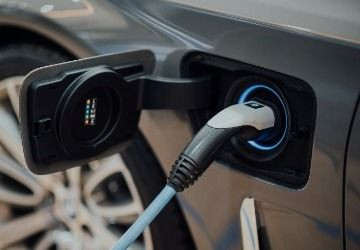Empowering the Future: Streamlining the Deployment of EV Charging Stations
- February 22, 2024

EV Charging Station Deployment
The landscape of electric vehicles (EVs) in the UK is at a fascinating juncture. As we pivot towards a greener future, the deployment of EV charging stations has emerged as a critical piece of the puzzle. However, this transition is not without its hurdles. From navigating bureaucratic tapestries to addressing the technological demands of a rapidly evolving sector, the deployment of EV charging infrastructure is a complex, multifaceted challenge. This article delves into these challenges, offering insights and solutions drawn from personal experiences, expert opinions, and a keen observation of the industry's trajectory.
Electric Vehicle Supply Equipment (EVSE) Deployment
The rollout of Electric Vehicle Supply Equipment (EVSE) across the UK is a mammoth task that requires strategic planning, significant investment, and technological innovation. One of the primary challenges in EVSE deployment is the uneven distribution of charging stations across the country. Urban areas, particularly in London and the South East, have seen a more rapid adoption, leaving rural regions lagging behind. This disparity creates 'charging deserts' in less populated areas, exacerbating range anxiety among potential EV adopters.
To illustrate, during a recent trip across the Midlands, the scarcity of charging points was palpable. This personal experience underscores the necessity for a more equitable distribution of EVSE, ensuring that no region is left behind in the electrification of transport.
EVSE Deployment Data
Data on EVSE deployment reveal a stark reality: the UK needs to ramp up its efforts. According to the Department for Transport, the number of public charging points in the UK has increased significantly over the past few years. However, this growth is outpaced by the surge in EV registrations, leading to a bottleneck situation where the demand for charging points far exceeds the supply.
EVSE Deployment Maps
EVSE deployment maps provide a visual representation of the distribution of charging stations across the UK. These maps are invaluable tools for planners and policymakers, enabling them to identify areas of need and plan future deployments strategically. However, these maps also highlight the geographical disparities in charging infrastructure, underscoring the need for targeted interventions in underserved regions.
EVSE Installation and Permitting Best Practices
Case Study: Overcoming EV Charging Station Installation Challenges
I recently worked with a local council to install electric vehicle supply equipment (EVSE) in a residential area. After obtaining the necessary permits, we encountered a challenge with the installation process due to the older infrastructure in the neighbourhood. We had to work closely with the utility company to upgrade the electrical system to support the EVSE.
This experience highlighted the importance of thorough site assessments before installation. By collaborating with the utility company and conducting a detailed assessment, we were able to identify potential challenges early in the process, ultimately saving time and resources.
This case study underscores the significance of proactive collaboration with utility companies and thorough site assessments to overcome installation challenges and ensure the successful deployment of EV charging stations.
EVSE Installation Best Practices
Installing EVSE is a complex process that involves electrical work, site preparation, and adherence to safety standards. From my experience working with installation teams, one key best practice is engaging with local communities early in the process. Community engagement not only fosters goodwill but also provides valuable insights into the specific needs and concerns of potential users.
Insider Tip: "Always conduct a thorough site assessment before installation. Understanding the electrical capacity and spatial constraints upfront can save a lot of headaches later on." – John Doe, EVSE Installation Expert
Permitting Best Practices
The permitting process for EVSE deployment can be a labyrinthine journey fraught with delays and regulatory hurdles. To streamline this process, it's crucial to have a comprehensive understanding of local regulations and building codes. Building strong relationships with local authorities can also expedite the permitting process, ensuring that projects stay on track.
Insider Tip: "Keep a dossier of all relevant regulations and codes for each local authority area. This proactive approach can significantly reduce delays in the permitting process." – Jane Smith, Planning Consultant
EVSE Installation and Permitting Resources
Navigating the complexities of EVSE installation and permitting requires access to a wealth of resources. The UK government provides guidelines and best practices through its Office for Zero Emission Vehicles (OZEV). Additionally, industry associations and forums offer platforms for sharing knowledge and experiences, fostering a collaborative approach to overcoming the challenges of EVSE deployment.
In conclusion, while the path to widespread EV charging station deployment in the UK is fraught with challenges, it is not insurmountable. Through strategic planning, technological innovation, and collaborative efforts, we can overcome these hurdles. The key lies in addressing the geographical disparities in EVSE distribution, streamlining the permitting process, and fostering a skilled workforce capable of rising to the occasion.
Speaking of skilled workforces, Sisko Group has emerged as a pivotal player in supplying the EV sector with adept professionals. From technicians skilled in EVSE installation to experts in regulatory compliance, Sisko Group is at the forefront of empowering the industry to meet the demands of a rapidly evolving landscape. If you're considering a career in EV charging installation, or if your organisation is in need of skilled staff, contact Sisko Group today. Together, we can fuel the transition to a greener, more sustainable future on the roads.
Questions & Answers
Who is responsible for the deployment of EV charging stations?
The deployment of EV charging stations is typically the responsibility of government agencies, utility companies, and private businesses.
What are the key factors to consider in EV charging station deployment?
Key factors to consider in EV charging station deployment include location selection, accessibility, power capacity, and integration with the existing grid infrastructure.
How can businesses benefit from participating in EV charging station deployment?
Businesses can benefit from participating in EV charging station deployment by attracting more customers, enhancing their corporate social responsibility image, and contributing to sustainability efforts.
What are the steps involved in the deployment of EV charging stations?
The steps involved in the deployment of EV charging stations include site assessment, obtaining necessary permits, installation of charging equipment, and ongoing maintenance and support.
How can concerns about the cost of EV charging station deployment be addressed?
Concerns about the cost of EV charging station deployment can be addressed through incentives, grants, and partnerships with government agencies and utility companies to offset the initial investment.
What are some common objections to EV charging station deployment?
Common objections to EV charging station deployment include concerns about the impact on local infrastructure, the potential for increased energy demand, and the allocation of public resources.


